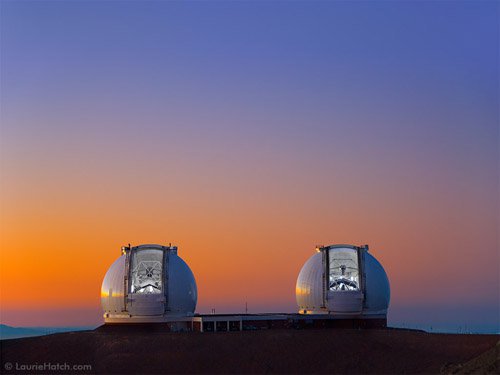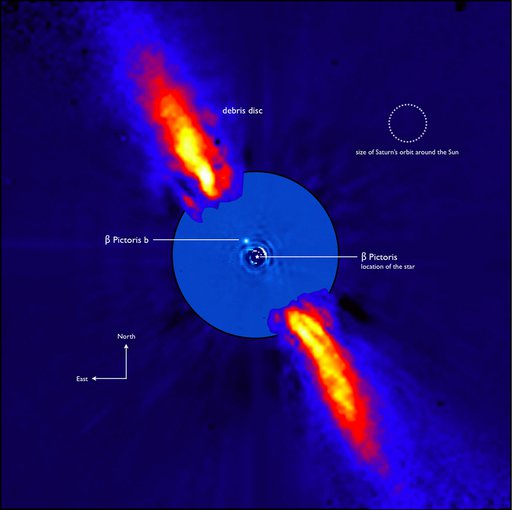
Dec. 24, 2018
Research Highlight
A Wide Planetary-Mass Companion

The sun sets on Mauna Kea as the twin Kecks prepare for observing.Image credit: Laurie Hatch.
Scientists have uncovered new details about the celestial object known as 2MASS J02495639−0557352 (M6 VL-G). This object is found in the Beta Pictoris (β Pic) moving group, a collection of young stars moving together. This moving group is named for the Beta Pictoris, which hosts the young gas giant planet, β Pic b. The β Pic moving group is a prime target for direct imaging of extrasolar planets due to the group’s age and relative proximity to the Earth. In fact, β Pic b has been directly imaged using a technique known as Reference Star Differential Imaging (RSDI). This was the first direct image of a planet orbiting as close to its host star as Saturn orbits the Sun.
Scientists have now discovered evidence of a giant exoplanet orbiting another object known as 2MASS J02495639−0557352. The planet (dubbed 2MASS J0249−0557 c) is estimated to be 11.6-Jupiter-masses, and has properties comparable to the planet β Pic b. In the future, direct imaging of 2MASS J0249−0557 c could provide a comparison of two planets with similar traits, and a unique opportunity to measure objects of planetary-mass that were built from similar starting material.

Composite image of the close environment of Beta Pictoris as seen in near infrared light. The planet β Pictoris b was the first planet as close to its host star as Saturn is to the Sun to be directly imaged.Image credit: ESO/A.-M. Lagrange et al..
Additionally, the team used data form the Keck telescope to determine that the host object, 2MASS J02495639−0557352, is actually a binary system composed of two tightly grouped objects. This changes the designation to 2MASS J0249−0557AB, which is one of the few ultracool binaries yet known in a young group of stars (and the first in β Pic). Altogether, the three objects make up a bound, triple system (dubbed 2MASS J0249−0557ABc).
The study, “The Hawaii Infrared Parallax Program. III. 2MASS J0249–0557 c: A Wide Planetary-mass Companion to a Low-mass Binary in the β Pic Moving Group” was published in The Astronomical Journal. The work was supported through NASA’s Habitable Worlds Program. The NASA Astrobiology Program provides resources for Habitable Worlds and other Research and Analysis programs within the NASA Science Mission Directorate (SMD) that solicit proposals relevant to astrobiology research.